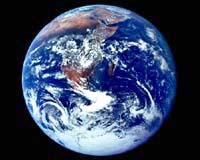
 |
The typhoon earlier dumped heavy rain on western Japan and left one person dead and 94 injured on Japan's southern Okinawan islands.
The typhoon knocked down trees and signboards were blown off their masts on the island, television footage showed.
Anti-disaster officials said the storm had cut electricity to around 10,000 homes there, although there were no immediate reports on casualties.
The Korean Meteorological Administration (KMA) said the typhoon was packing winds of up to 216 kilometres per hour (135 miles per hour), the strongest the weather office has ever observed.
The KMA said the typhoon first hit the southern South Korean city of Samcheonpo in Kyongsang province around 8:00 pm (1100 GMT), an hour earlier than expected because of its increasing speed.
"The typhoon is expected to make its way off the peninsula towards the East Sea (the Sea of Japan) at around 3:00 am Saturday," a KMA official told AFP.
The typhoon left stranded tens of thousands of people visiting hometowns on islands for the thanksgiving Chuseok holidays as high waves kept ferries from operating.
On Friday, the typhoon dumped up to 350 millimeters (14 inches) of rain on the southern coastal city of Yeosu and caused waves of up to 10 metersfeet) high, KMA officials said.
Japan's local authorities earlier said typhoon Maemi, which had packed 144 kilometer (90 mile) per hour winds, was the worst to hit the southern Japanese islands of Okinawa in 30 years.
Heavy rain fell on western Japan Friday morning, with the agency predicting a total of 250 millimeters over 24 hours from noon on Shikoku island, and 150 millimeters on Kyushu island.
In Nagasaki prefecture on southwestern Kyushu, 48 people evacuated their homes while there were six instances of landslides or cliffs collapsing.
As the centre of the wind system passed over Japan, the Meteorological Agency there downgraded Maemi from "violent" Thursday afternoon to "strong" Friday morning.
One elderly woman died and 94 were injured, one seriously, in typhoon-related incidents on the Okinawan islands, but the worst appeared to be over, according to the Okinawa prefecture's emergency section.
Most of the damage and injuries on the Okinawa chain occurred on its southwestern-most Miyakojima islands.
The typhoon toppled trees, downed power lines and cut electricity to 19,600 homes, while water utilities to 1,000 homes was disrupted and phone service was erratic, the prefecture said.
Thirty-four people evacuated their homes, while six residences and 16 non-residential buildings were damaged, it said. Four boats were also sunk or damaged.
Reconstruction work was underway, but the total cost of the damage was not yet clear, Machida said.
TERRA.WIRE |